Broadly speaking, roses aren’t one of those types of plants that you can put in the ground and forget about.
On the contrary, us gardeners generally spend a lot of time pruning, deadheading, spraying, and otherwise coddling our shrubs.
If you’re anything like me, you spend more time checking on, pampering, and enjoying your roses than any other species in the garden.

We link to vendors to help you find relevant products. If you buy from one of our links, we may earn a commission.
That’s why when anything happens to make the flowers look odd, it’s extra disappointing. A deformed poppy might be annoying, but not the end of the world. A distorted rose? Time to freak out.
There are many reasons that roses might appear misshapen, discolored, or otherwise deformed.
Pest infestations, too much rain, or even herbicides can cause these issues. If you’re battling funky flowers, hang tight.
We’re going to discuss nine common causes and what you can do about them, coming right up:
9 Common Causes of Deformed Rose Flowers
Before we start wading through the world of rose flower problems, let’s make sure we’re all on the same page with our terminology.
When we say distorted or deformed, we are referring to anything that makes a flower look different than it would under ideal conditions.
Imagine folded or wrinkled petals, a strange blossom shape, smaller flowers, or asymmetrical buds. It can also mean unusual colors and textures.
With that out of the way, let’s get started.
1. Aphids
An aphid infestation can make plants do all kinds of funky things. These pests can cause wilting, yellowing, and distortion – in both the flowers and the leaves.
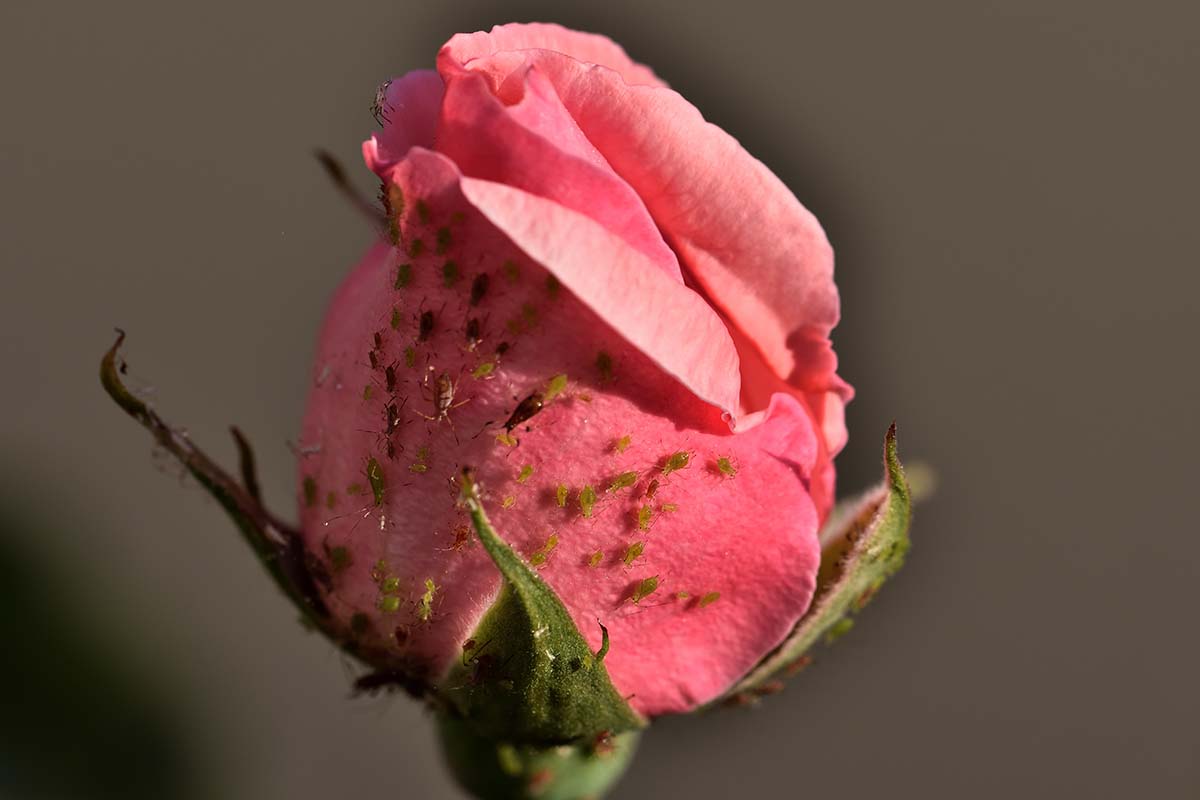
Oh, and these bugs also spread diseases that can result in all manner of additional problems. There’s not a lot to love about these tiny, super-common jerks. I know they’re just trying to make a living, but can’t they find some less important plant to bother?
What sets this particular cause apart from other issues that distort flowers is that the blossoms and leaves will be coated in a sticky substance known as honeydew.
This is the waste product that the aphids leave behind as they use their tiny mouthparts to suck out the sap from the plants, and it can lead to unsightly sooty mold.
To learn about how to identify and get rid of aphids, visit our guide, which explains everything you need to know.
The process is fairly straightforward, and once you’ve eradicated an infestation, your plant should look shipshape in no time!
2. Balling
Rose balling isn’t a disease, but it kind of looks like one.
This physiological disorder only affects double flowers – single flowers with fewer petals don’t suffer from this issue.
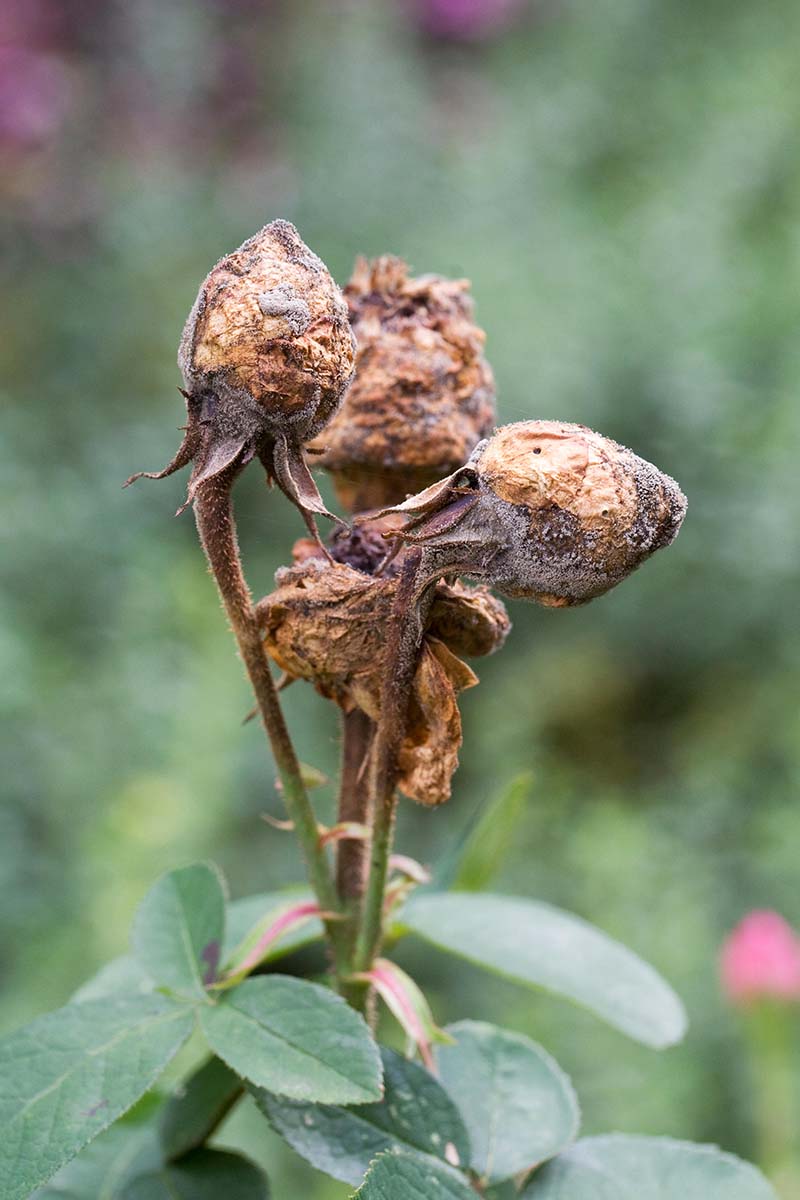
What happens is that the bud develops as normal and as it is getting close to opening, cold wet weather arrives. Then, the sun comes out and basically fuses those wet petals together. The bud can’t open and you’re left with a brown, clumpy-looking flower.
Typically, if the weather cooperates, you’ll just need to trim away the balled flowers, and new ones will emerge as normal.
If you live somewhere that has particularly cool and wet spring weather with days of sun sprinkled throughout, you can reduce the chances of this happening by keeping your shrubs well pruned to improve air circulation, so that moisture on the buds can evaporate.
If you are desperate to protect those blossoms, consider covering the plants with a tarp shelter or umbrellas during particularly rainy weather.
3. Herbicides
Post-emergent herbicides such as those containing glyphosate can cause a whole host of weird symptoms on plants, including flower distortion.
If you’ve ever come across witches’-broom which we discuss below, the symptoms are similar. Leaves may be yellowish and distorted, and flowers can have small, deformed petals.
The cure here is simple: stop spraying your garden with herbicides – or at the very least do it well away from your roses.
If you must use herbicides, consider a different application method that won’t allow the chemicals to spread. It will take a while before your shrub will return to normal, so you’ll need to be patient.
4. Powdery Mildew
Powdery mildew is distressingly common in the home garden. It makes the blossoms and buds look strangely small and the buds might open unevenly, if they open at all.
This is in addition to all the other symptoms it can cause on leaves and stems such as a powdery coating, red blister-like growths, and curled, wrinkled foliage.
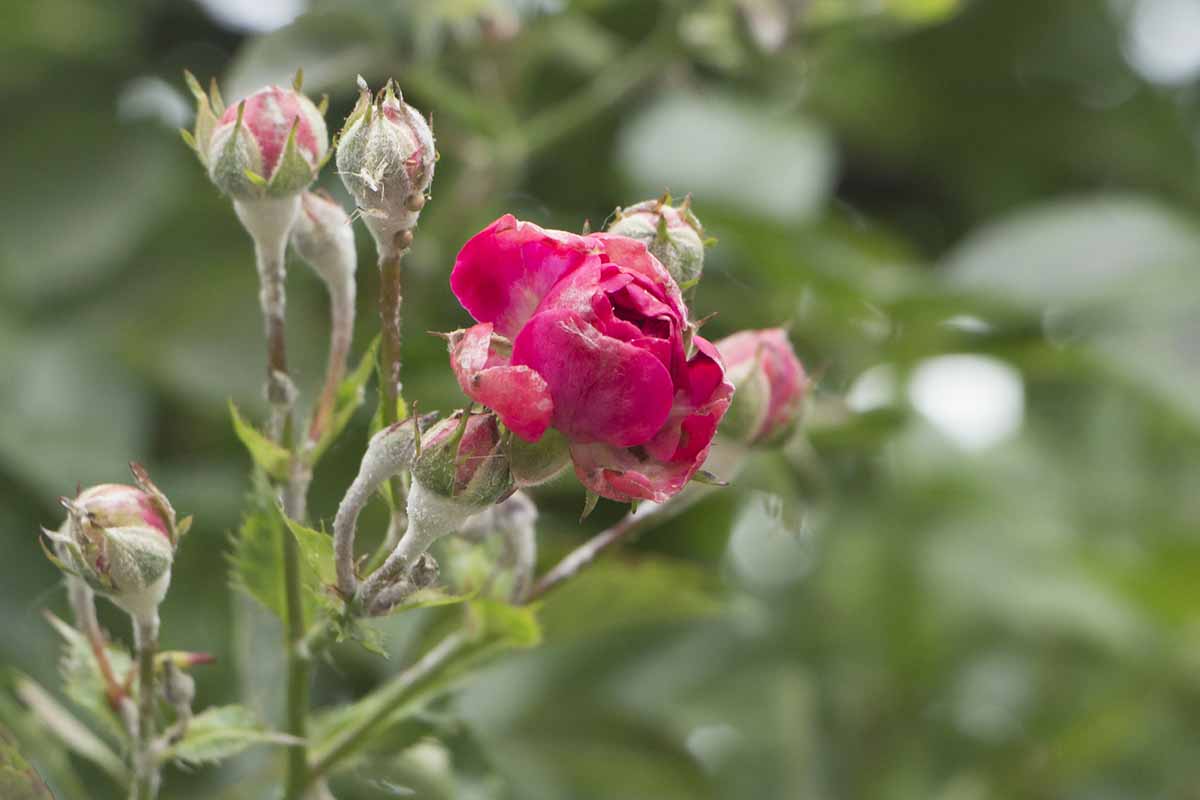
The fungus that causes this disease (Podosphaera pannosa var. rosae) thrives when it’s cool at night and hot during the day, especially if there’s lots of humidity.
There are many treatment options, if you decide to treat at all, including using a milk spray, mineral oil, or a product that contains the beneficial bacterium Bacillus amyloliquefaciens.
To learn how to use these treatments, along with some tips on prevention, visit our powdery mildew guide.
5. Rose Curculio
Rose curculio is a pest that feeds specifically on rose and cane berry flowers.
There are two species common in North America: the rose curculio (Merhynchites bicolor) and western rose curculio (M. wickhami).
Both species are snout beetles that are red and black and about a quarter-inch long. The adults start feeding in the spring on those developing flowers, leaving holes in the buds.
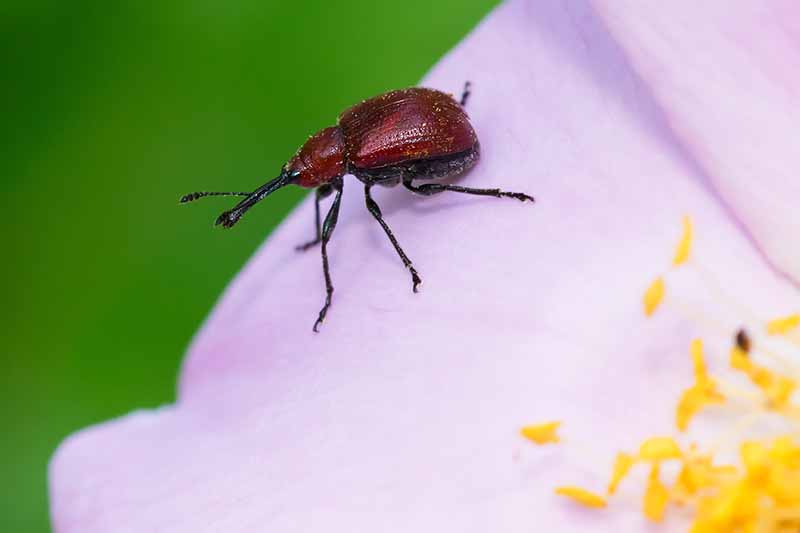
Then, they lay eggs in the holes and the larvae develop inside the buds, feeding on the developing flower. In the late summer, the larvae emerge and drop to the soil to overwinter.
Meanwhile, your rose buds may fall off the plant, or if they remain and open up, the flowers will have rounded holes and ragged margins on the petals.
Controlling these little pests sucks, I’m not going to lie to you. Handpicking is the most effective method of eliminating the adults, but simply removing them is not enough.
You also need to remove any flower buds that have holes in them and dispose of any spent flowers to deny the beetles a host.
Then, you’ll need to treat the soil to kill off any of the creamy white, quarter-inch-long weevils that are living underground. You can do this by soaking the soil with beneficial nematodes.
Triple Threat Beneficial Nematodes
If you don’t already have some of these fabulous creatures in your gardening arsenal, visit Arbico Organics to pick up the Triple Threat Combo in packages of five-, 10-, 50-, 250-, or 500-million nematodes.
Finally, if you just can’t seem to resolve the situation, you might just need to pull up the most heavily infested plants.
For some reason, these beetles really love certain species and rose types and you might just end up battling them non-stop once they’ve found your bushes.
6. Rose Rosette
Rose rosette is no fun at all. It’s such a serious problem that commercial rose growers, universities, the American Rose Society, and the USDA have joined forces to try and figure out how to deal with it.
That’s because it kills your plants, there is no cure, and it’s spreading across North America.
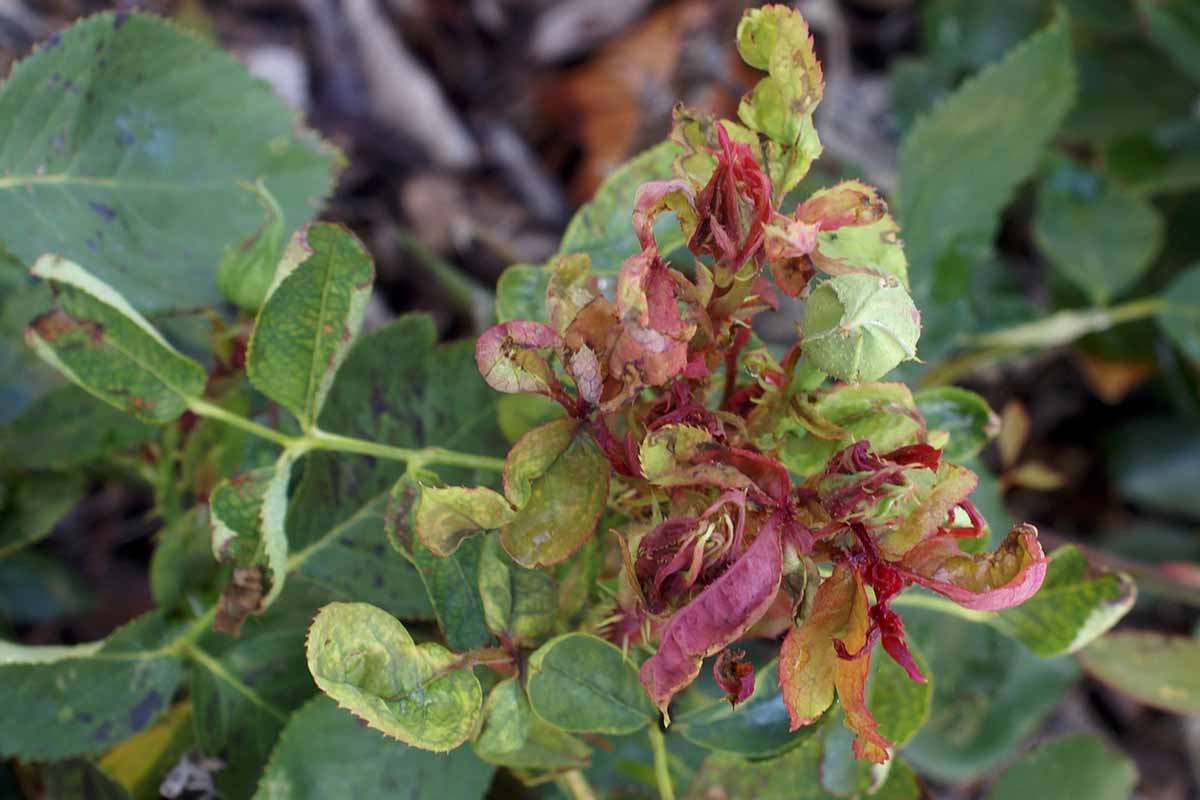
This viral disease is carried by the mite Phyllocoptes fructiphilus and causes deformed blossoms that might also be discolored, in addition to a host of other symptoms like witches’-broom, excess prickles, and blackened stems.
You can prune the damage away, and you might be able to keep your plant around for a few years, but chances are high that it will eventually die. You also run the risk of spreading the disease to any nearby roses.
Sometimes the safest bet is to remove the shrub from your garden. To learn more about this disease, check out our comprehensive guide.
7. Rust
Rust is a common fungal issue, especially in the western US. That’s because the fungi that cause this disease, which are all in the genus Phragmidium, like temperatures in the high 60s with lots of humidity.
The rainy, foggy, misty conditions of much of the Pacific coast are just what the doctor ordered.
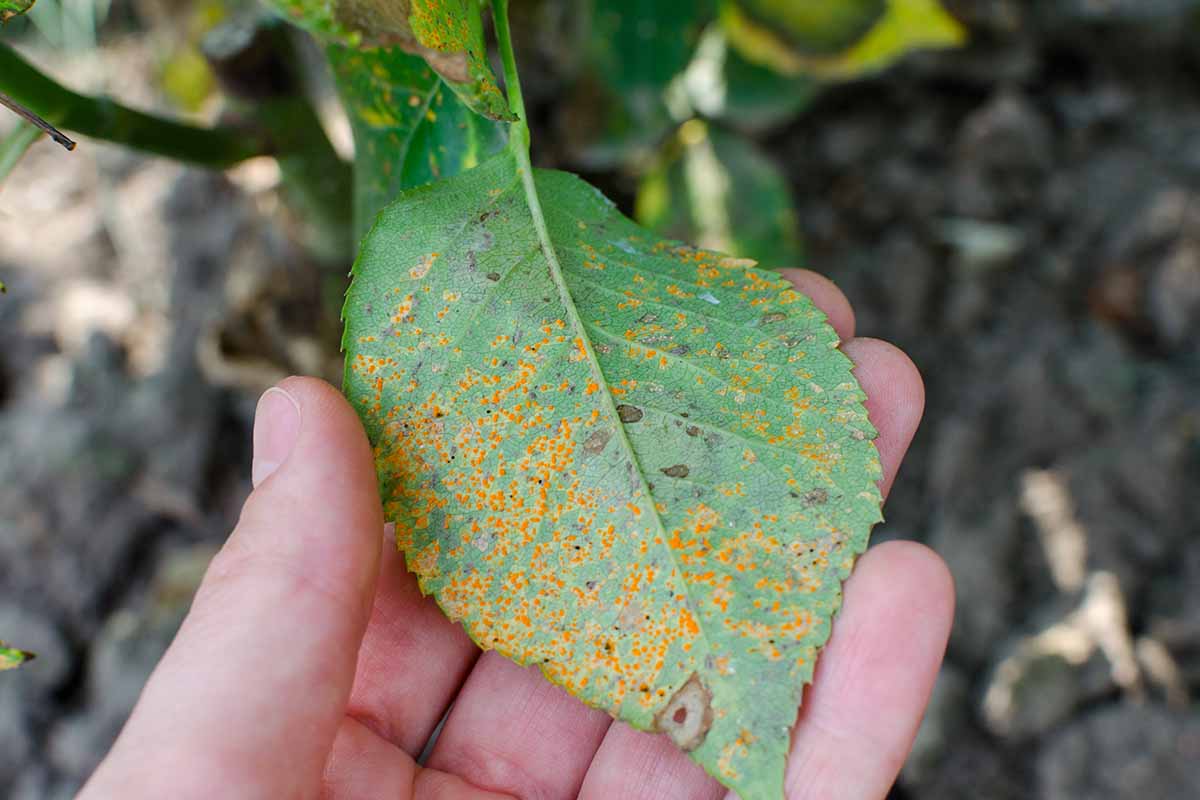
If you have floribunda, musk, shrub, or wild roses, you probably won’t encounter rust. But the rest of us need to be on guard.
If you notice the flowers looking misshapen or small, look closely at the foliage. You’ll usually spot orange pustules on the underside of the leaves.
Copper fungicide is highly effective at treating this disease so long as you are super careful to coat the tops and bottoms of the leaves as well as the stems. If you miss areas, you won’t kill the spores and the disease will continue.
Bonide Liquid Copper Fungicide
Arbico Organics carries Bonide Liquid Copper Fungicide in 32-ounce ready-to-use, 16- or 32-ounce hose-end, and 16-ounce concentrate containers. I highly recommend you keep some in your toolkit because it’s a versatile product.
You should also prune away heavily impacted areas and clean up and dispose of any fallen leaves or debris in the autumn.
Find more tips on identifying and treating rust on roses here.
8. Spider Mites
Spider mites can potentially cause distorted growth on roses, but they can also cover buds in webs that will prevent the petals from opening fully. They also cause yellowing leaves and stunted growth.
These arachnids in the Tetranychidae family like dry, warm weather, and their populations can explode rapidly in these conditions.
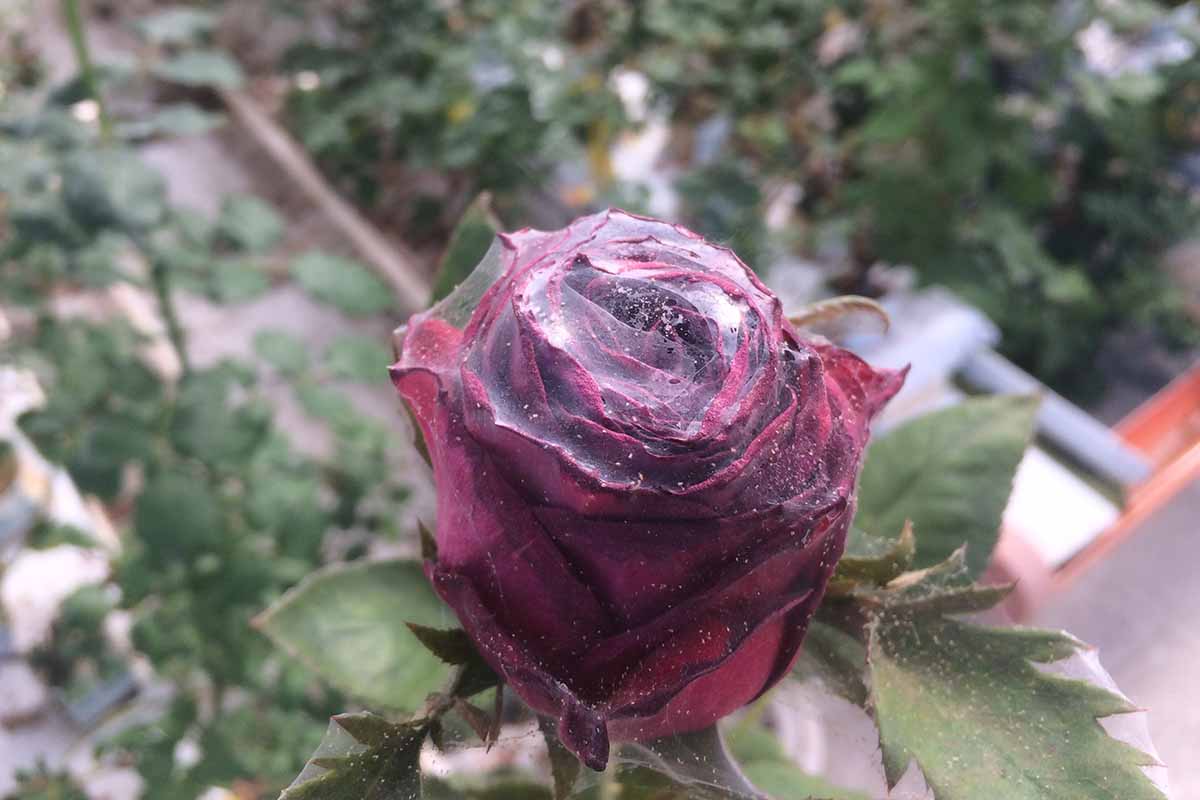
Don’t treat spider mites with insecticides. It might work in the short term, but insecticides will also kill off beneficial insects, which means you might end up facing an even bigger problem with spider mites and other pests down the road.
The best option is to simply spray the plants with a blast of water in the morning on a sunny day to knock the spider mites to the ground. Most of the time, they won’t return to the same plant.
A treatment with neem oil every 10 days can help, too.
You can find neem oil available at Arbico Organics.
Learn more about spider mites and how to manage them in our guide.
9. Thrips
Call me a fool, but I hate thrips. These millimeter-long, slender pests don’t look like much, but the damage they do is oversized.
They use their straw-like mouthparts to sip from your roses like they’re at their own personal soda fountain. As they feed, they can spread diseases and cause distorted buds and blooms, which is especially evident in light-colored flowers.
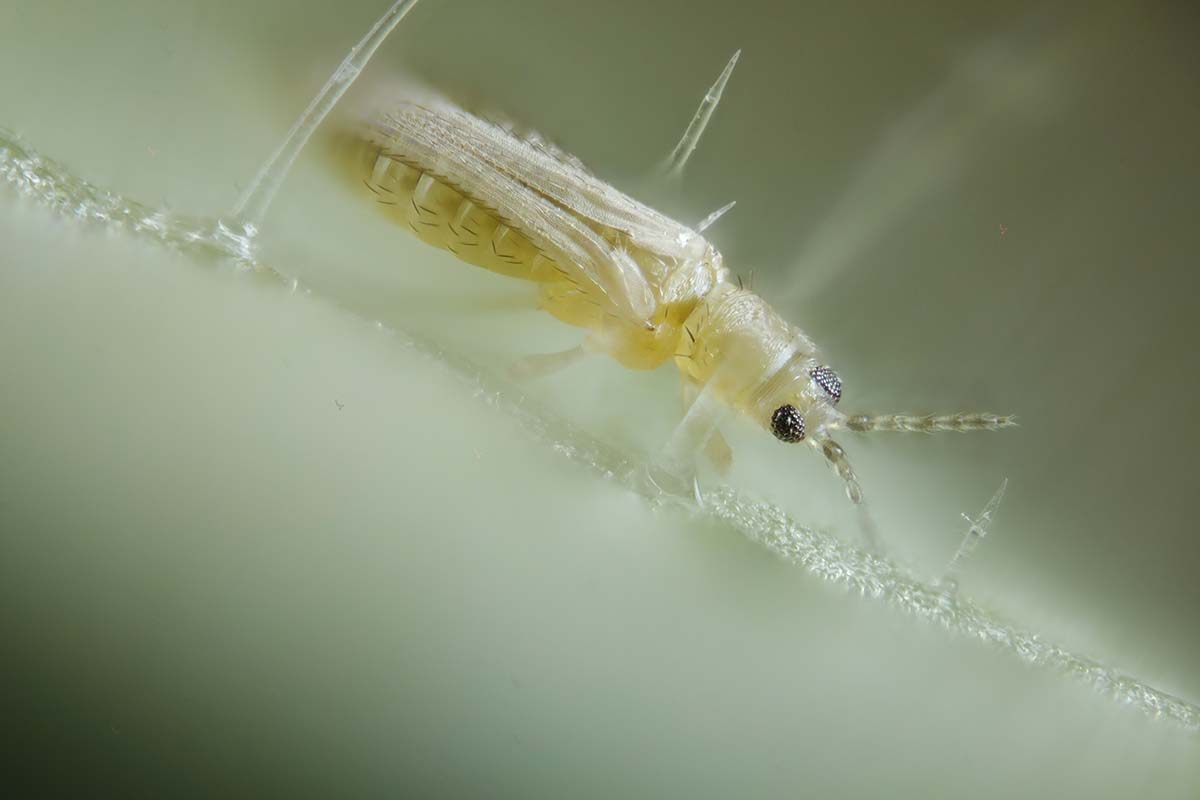
It can be hard to spot these pests, so if you aren’t sure if they’re dining on your shrubs, cut off a healthy flower. Peel back the outer petals and look for these narrow insects at the base. You might need to blow on the flower to encourage them to move around.
If you see thrips, immediately cut off all of the blossoms on your plant. I know, it hurts, but it’s the first step to ending the problem.
Next, introduce predatory thrips and mites, pirate bugs, lacewings, parasitic wasps, or parasitic nematodes to help keep populations under control.
Finally, treat the plant every two weeks with a product containing Beauveria bassiana, whether you see the pests or not.
This beneficial fungus attacks all kinds of unwelcome garden insects. Snag a pound at Arbico Organics.
Check out our guide to thrips to learn more.
Don’t Let Deformed Roses Ruin Your Display
Deformed roses are rarely a sign of a fatal disease, but that doesn’t mean we can just ignore them.
After all, we grow roses because we want to revel in the gorgeous display. We don’t want funky-looking freeloaders in our garden, right?

What was causing the deformity in your roses? Did this guide help you figure it out? Let us know about your experience in the comments section below.
If you’re having other troubles with your roses, we have a few guides that might be able to set you on the road to recovery, including:

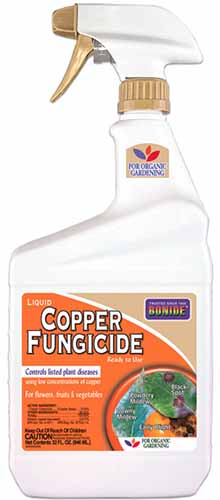
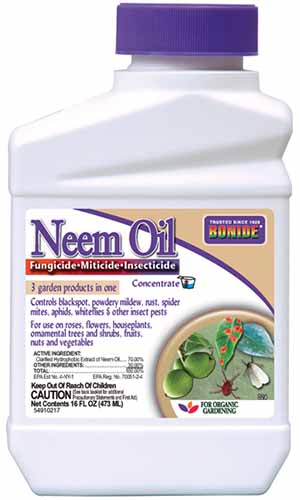
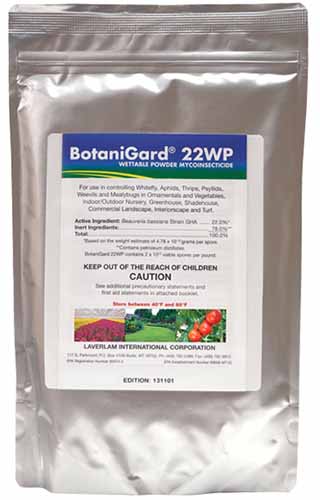



Informative, thanks
Thanks for reading, Asha!